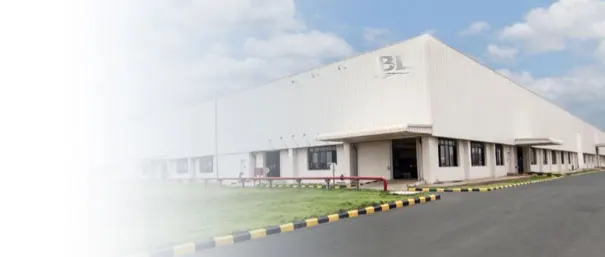JIS SUS304 Stainless Steel: High-Performance Austenitic Grade for Industrial and Sanitary Applications
JIS SUS304 stainless steel, equivalent to ASTM 304 and UNS S30400, represents the most widely utilized austenitic stainless steel grade in global markets. Defined under Japanese Industrial Standards (JIS G4304/G4305), this 18/8 chromium-nickel alloy delivers exceptional corrosion resistance, formability, and weldability. Its balanced composition makes it the material of choice for food processing, chemical equipment, architectural components, and general engineering applications where hygiene and durability are critical. This technical guide explores its chemical properties, mechanical characteristics, manufacturing processes, and industry-specific applications.
1. Chemical Composition (JIS G4304/G4305 Standard)
| Element | Content Range (%) | Metallurgical Function |
|---|---|---|
| Carbon (C) | ≤ 0.08 | Minimized to prevent sensitization and intergranular corrosion during welding |
| Chromium (Cr) | 18.00 – 20.00 | Primary corrosion-resistant element forming protective Cr₂O₃ passive layer |
| Nickel (Ni) | 8.00 – 10.50 | Stabilizes austenitic microstructure; enhances ductility and cryogenic toughness |
| Manganese (Mn) | ≤ 2.00 | Improves hot workability; partial nickel substitute for cost optimization |
| Silicon (Si) | ≤ 1.00 | Enhances oxidation resistance; acts as deoxidizer during smelting |
| Phosphorus (P) | ≤ 0.045 | Controlled impurity; excessive levels reduce toughness and corrosion resistance |
| Sulfur (S) | ≤ 0.030 | Minimized to prevent hot cracking during welding and reduce machinability issues |
2. Mechanical Properties (Room Temperature)
- Tensile Strength: ≥ 520 MPa (JIS standard minimum)
- Yield Strength (0.2% offset): ≥ 205 MPa (ensures structural integrity under load)
- Elongation: ≥ 40% (superior formability for deep drawing and complex shaping)
- Hardness: ≤ 201 HB (Brinell) or ≤ 92 HRB (Rockwell) for annealed condition
- Impact Resistance: ≥ 27J at -196°C (retains toughness in cryogenic applications)
- Modulus of Elasticity: 193 GPa (typical for austenitic stainless steels)
3. Manufacturing and Processing Characteristics
- Melting Practice: Electric arc furnace (EAF) followed by argon oxygen decarburization (AOD) to achieve ultra-low carbon content and precise alloy composition control.
- Hot Working: Performed at 1150-1260°C with rapid water quenching to maintain single-phase austenitic structure and prevent carbide precipitation.
- Cold Working: Excellent work hardening capacity; typically cold rolled to final gauges with intermediate annealing at 1010-1120°C to restore ductility.
- Heat Treatment: Solution annealing at 1010-1120°C followed by water quenching to dissolve chromium carbides and optimize corrosion resistance.
- Surface Finishing: Available in 2B (standard mill finish), BA (bright annealed), No.4 (satin), and mirror finishes for diverse application requirements.
- Fabrication: Readily machinable with standard tooling; optimal cutting speeds 50-70% of carbon steel equivalents using cobalt or carbide tools.
4. Key Application Sectors
Food Processing & Beverage
Sanitary equipment (tanks, mixers, conveyors), dairy processing lines, brewery systems, and food-grade piping compliant with JHOSPA and FDA regulations.
Architectural & Structural
Exterior cladding, handrails, decorative panels, and structural components requiring atmospheric corrosion resistance and aesthetic appeal.
Chemical & Pharmaceutical
Storage tanks, heat exchangers, and process vessels for mild chemical environments (pH 4-10); pharmaceutical cleanroom equipment.
Automotive & Transportation
Exhaust system components, trim pieces, and structural reinforcements where corrosion resistance and formability are critical.
Consumer Products
Kitchen appliances, cookware, cutlery, and hardware requiring hygiene, durability, and ease of cleaning.
Industrial Equipment
Pumps, valves, fasteners, and general-purpose components for moderate corrosion environments.
5. Comparison with Related Grades
| Grade | Carbon Content | Key Characteristics | Typical Applications |
|---|---|---|---|
| SUS304 | ≤ 0.08% | Standard 18/8 composition; optimal balance of properties | General-purpose applications without welding or high-temperature exposure |
| SUS304L | ≤ 0.03% | Low-carbon variant; superior weldability and intergranular corrosion resistance | Welded structures in corrosive environments; heavy-gauge components |
| SUS304H | 0.04-0.10% | Higher carbon for enhanced high-temperature strength | Pressure vessels, boilers, and components operating above 500°C |
| SUS304Cu | ≤ 0.08% | Copper-added variant; improved cold formability | Deep-drawn components and complex shaped parts |
6. Technical Considerations and Best Practices
- Corrosion Limitations: Avoid prolonged exposure to chloride concentrations >200ppm or temperatures above 60°C to prevent pitting/crevice corrosion. For marine environments, consider SUS316.
- Welding Procedures: Use ER308L filler metal for autogenous welding; maintain heat input <1.5kJ/mm to prevent sensitization. Post-weld pickling/passivation recommended.
- Surface Protection: Remove iron contamination immediately to prevent galvanic corrosion; use dedicated stainless steel tools during fabrication.
- Quality Assurance: Verify compliance with JIS G4304 (hot-rolled) or G4305 (cold-rolled) standards; request mill test certificates (MTC 3.1) for critical applications.
- Alternative Grades: For higher corrosion resistance, consider SUS316 (2-3% Mo); for cost-sensitive applications, SUS201 (Mn-substituted) may be suitable.
7. Request SUS304 Stainless Steel Quotation
For customized JIS SUS304 stainless steel products including sheets, coils, pipes, bars, or special profiles, contact our technical sales team. We provide comprehensive material certification, precise dimensional tolerances, and global logistics support tailored to your project requirements.
.content-wrap { font-family: Arial, Helvetica, sans-serif; color: #333; line-height: 1.8; margin: 0 auto; padding: 20px 30px; max-width: 1200px; }
.article-title { font-size: 28px; color: #222; font-weight: 700; margin: 0 0 30px; padding-bottom: 15px; position: relative; border-bottom: 2px solid #eee; }
.article-title::after { content: “”; position: absolute; left: 0; bottom: -2px; width: 120px; height: 2px; background-color: #2c5282; }
.article-intro { font-size: 16px; color: #444; margin: 0 0 40px; text-align: justify; }
.section-title { font-size: 22px; color: #2c5282; font-weight: 600; margin: 50px 0 25px; padding-left: 15px; border-left: 4px solid #2c5282; }
.table-container { width: 100%; overflow-x: auto; margin: 0 0 30px; }
.spec-table, .compare-table { width: 100%; border-collapse: collapse; background-color: #fff; box-shadow: 0 2px 5px rgba(0,0,0,0.05); }
.spec-table th, .spec-table td, .compare-table th, .compare-table td { padding: 12px 15px; border: 1px solid #eee; text-align: left; }
.spec-table th, .compare-table th { background-color: #f8f9fa; color: #2c5282; font-weight: 600; }
.spec-table tr:hover, .compare-table tr:hover { background-color: #fafafa; }
.property-list, .process-list, .precaution-list { padding-left: 20px; margin: 0 0 35px; }
.property-list li, .precaution-list li { margin: 0 0 12px; font-size: 15px; }
.process-list li { margin: 0 0 18px; font-size: 15px; }
.property-list strong, .process-list strong, .precaution-list strong { color: #2c5282; }
.application-grid { display: grid; grid-template-columns: repeat(auto-fit, minmax(280px, 1fr)); gap: 25px; margin: 0 0 40px; }
.application-item { padding: 20px; background-color: #fafafa; border-radius: 6px; border: 1px solid #eee; }
.application-item h3 { font-size: 18px; color: #2c5282; margin: 0 0 12px; font-weight: 600; }
.application-item p { font-size: 14px; color: #555; margin: 0; }
.quote-cta-section { margin: 60px 0 20px; padding: 30px; background-color: #f8fafc; border-radius: 8px; border: 1px solid #e2e8f0; }
.quote-cta-content { max-width: 800px; margin: 0 auto; text-align: center; }
.quote-cta-content p { font-size: 16px; color: #475569; margin: 0 0 30px; line-height: 1.8; }
.quote-cta-btn { display: inline-block; padding: 12px 35px; background-color: #2c5282; color: #fff; font-size: 16px; font-weight: 600; text-decoration: none; border-radius: 4px; transition: background-color 0.3s ease; }
.quote-cta-btn:hover { background-color: #1e3a8a; }


